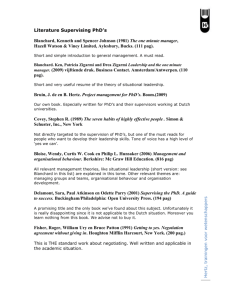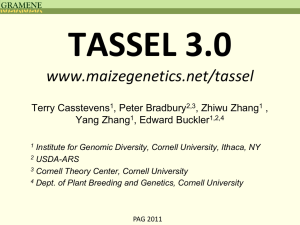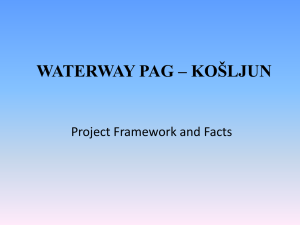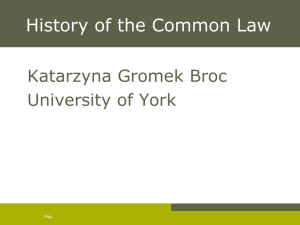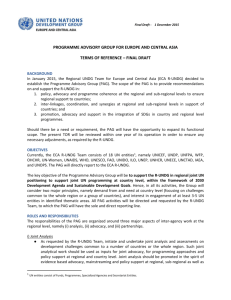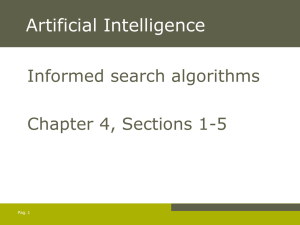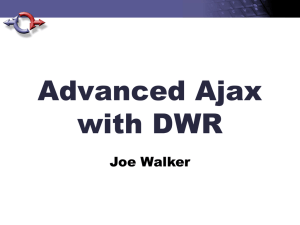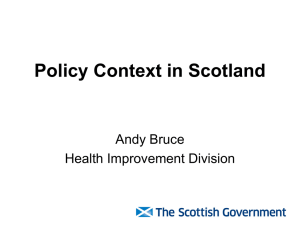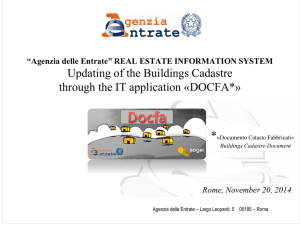Impact of Doctoral Research on Local Authority Policy and
advertisement
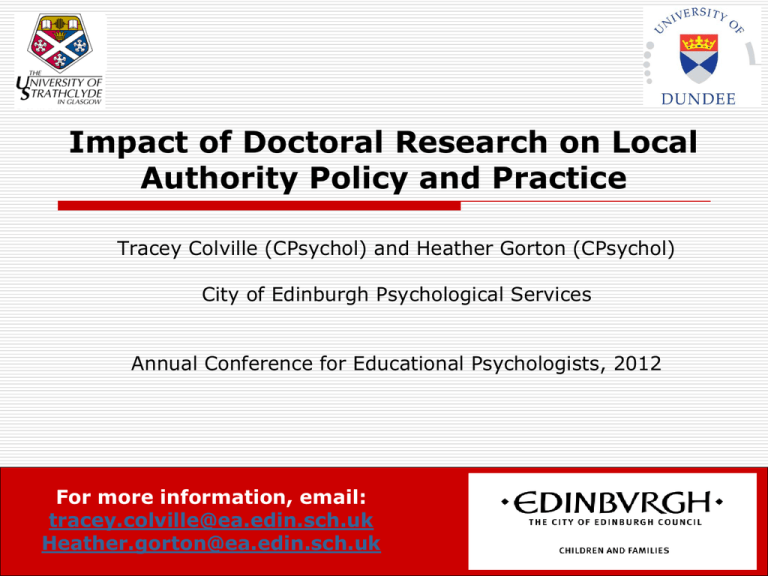
Impact of Doctoral Research on Local Authority Policy and Practice Tracey Colville (CPsychol) and Heather Gorton (CPsychol) City of Edinburgh Psychological Services Annual Conference for Educational Psychologists, 2012 For more information, email: tracey.colville@ea.edin.sch.uk Heather.gorton@ea.edin.sch.uk Aims of the Workshop To provide a brief overview of our research (20 mins) To discuss the EP as research-practitioner To evaluate the contribution of our research to changes in authority policy and practice To invite you to consider possible avenues of research in your own authority To share our own ‘highs and lows’ of doctoral study Heather’s Doctoral Research Overview High levels of delayed school entry Query re criteria to apply Assumptions seemed to be made about ‘benefits’ No long term follow up of children/outcomes Voice of child not captured Literature review-a lot of international research, very little Scottish research Aims of study To explore decision making process from a variety of perspectives To set these against theoretical models of readiness To follow the ‘journey’ of retained children from nursery through their first year of school To focus particularly on transitions as part of this To find a way to capture the views of the children involved Methodology ‘Case study’ qualitative approach adopted 6 children and their families followed up over 2 years Documentary analysis Semi-structured interviews with key participants Adapted mosaic methodology developed to capture children’s views Results Participants held and applied different models of school readiness Tension in giving advice and making decision Positives- ‘more time’ for assessment, development, parental acceptance of needs Negatives- loss/reduction of services, child’s size/age in relation to peers, lowered teacher expectations of child’s potential Most parents still happy with decision at end of P1 Children joining P1 of NC school/more transition activities Children moving to specialist provision less transition activities Methodology to capture children’s views developed Conclusion/Next Steps Need to develop a more ‘interactionist’ approach (Meisels, 1998) to this issue: Encourage parents and nursery staff to discuss pros and cons Identify potential barriers Discuss with school how to overcome/support these Plan more effective transitions for children with complex needs Involve parents more fully in the process ‘Ready Schools’ rather than ‘Ready Children’ Tracey’s Doctoral Research The mess of decision-making! Context of the study: Self-evaluation identified the need for a review of a local authority decisionmaking process for specialist educational provision for children with additional support needs (ASN). ‘It is a highly elaborate process for the allocation of places that seems to work most of the time. The psychologist advises on placement, the PAG advises on placement, and eventually we see the puff of white smoke.’ ‘I think the current system is an incentive for schools to give away their children.’ PAG as an activity system Tools: protocols, systems, models of practice, assessment tools, reports, language Subject: Children and Families Services Support professionals Outcomes: Appropriate educational placement offered Object: Assessing children’s needs Rules: Legislation, time, agreements Community: other professionals, family, peers Division of labour: traditional working practices Key Tensions Within the Process Partnership with parents Multi-agency working The role of the Educational Psychologist Complex, non-transparent process Lack of guidelines and criteria for process of admission to special schools Inclusion vs Special Education - evidence base? Meeting learners’ needs Compare with Lamb Inquiry Outcomes (2009 & 2010) Aims of the study To evaluate the extent to which Cultural Historical Activity Theory (CHAT) and Developmental Work Research (DWR) are useful analytical and intervention tools for local authority organizational change processes (Engestrom 2007b, 1987) To contribute to the change process of local authority policy and practice for children with ASN. CHAT (Activity Theory) and DWR: Shaping and being shaped by... Dialectical tradition – culturally mediated activity Collaboration between researchers and practitioners to resolve contradictions in complex work/learning contexts (schools, local authorities) Expansive learning as cycles of change and development •Application of Vygotskian theory •DWR workshops as mediational mechanism to open up the ZPD of PAG activity to consider future practice •use of conceptual tools •Internalization and externalisation •Dual stimulation •everyday understandings to theoretical generalizations Developmental Work Research (Engestrom, 1987) Activity system as the unit of analysis Multi-perspectives of PAG activity ‘multi-voicedness’ ‘Time travel’ (historicity) – past, present, future PAG activity Focus on sources of contradictions in individual and networks of (or collective) activity systems as force for change By making contradictions explicit, new learning can occur within activity systems. Reference to idea of ‘expansive learning’, achieved in DWR workshops or ‘change labs’ Applications of DWR Methodology Application of Activity Theory and DWR to consider interprofessional working within local authority systems to support children and their families (Edwards et al, 2009). Activity Theory framework provides a means of conceptualising the systems that exist when people work together on specific activities. It is increasingly used to understand, investigate and make sense of social and professional practice and organizational change. The Empirical Investigation Three workshops based on a CHAT/ DWR interventionist methodology with ten participants: senior education professionals, strategic managers and the research-practitioner (EP) The aim was to consider the PAG process in terms of systemic contradictions and to discuss the change potential of the authority to transform the process. •Information from two internal authority studies of the PAG process was used as ‘mirror’ data in the empirical investigation as catalysts for critical discussion. •Workshop activity led to a table of recommendations. Functioned as catalyst for an expansive cycle of change in authority processes •‘centripetal potential’ – making inroads into central structures and processes Hypothesising contradictions in PAG activity: The Perceptions of DWR Participants • Assessment tools and criteria may make decision-making more difficult.: • Criteria vs unclear evidence on which decisions are based • Use of IQ vs contextual assessment methodology •Written communication with parents •Limited authority resources vs meeting children’s needs •Education professionals •Authority officers •Head teachers •Researcher-practitioner Rules The equity of the PAG process may be compromised because of national placing request and ASL legislation •Recommendations/ decisions may lead to inappropriate placement in which aspects of a child’s needs are not met •Placement decisions may be challenged Tools Outcomes of PAG activity •Outcomes of appeals/tribunals may lead to placement of child in a provision that may or may not meet needs Object of PAG may be influenced by several factors and PAG activity constraints: •Meeting individual needs vs needs of other children vs prioritisation criteria •Parental vs professional opinion •Need for the ‘mess of good decision-making vs transparency and clarity of decision-making criteria Subjects Community Assumption by some that special school meets needs better vs lack of evidence base to support some of these assumptions Division of Labour There may be gaps, overlaps and discoordination within and between services that affect how needs are met: There may be problematic partnerships with stakeholders Key Turning Points in Expansion of Object of PAG Activity Review of PAG T 1 O Broaden scope of PAG review T DOL 2 O DOL T 3 Develop inclusive capacity of mainstream schools O DOL T •Mo 4 O Re-configure services for children and families DOL 6. Spreading and consolidating the new model Update on PAG change process (2011) PAG review group established ; EP role New SEBN model; new language class model New EP roles in case mgt group Profiling of need/specialist provisions Linking PAG to GIRFEC/ASL pathways Quality assurance of PAG applications Research on children’s trajectories (P7-S1) EP role 5. Implementing the new model Evaluation (2010-2011) Presentation to senior LA officers –EP Various work-streams established New tools developed ; new models systems planned Literature for parents; Links with parent group In ASL self-evaluation plan On-going tool (eg new Form 1 & 3. guidance) 1. Charting the situation DWR 1 (2009) Questioning the PAG process Need for review 2. Analysing the needs and possibilities of development DWR 1 Analysis of ethnographic (mirror/case study) data Consider past and present PAG activity What are the central contradictions in PAG activity? 3. Creating a new model for the activity 4. Concretising and testing the new model DWR 3 (2010) Developing a work plan /model New tools, DOL, expanded object of activity Table of recommendations produced DWR 2 (2009) Consider new ways of working in PAG activity based on analysis of contradictions DWR workshop recommendations Promote inclusive learning Match needs to provision Develop single planning process - new allocation model in alignment with GIRFEC service delivery model More robust evidence of need Develop & publish Criteria for allocation of provision Profiles of special schools and provisions Guidelines for parents and professionals of the decisionmaking process Consider professional roles in the process; emphasise the multidisciplinary nature of the process Develop a support and challenge role within new allocation model Develop training for professionals Create a more evidencebased process; commission on-going research to establish this Developing a Shared Vision at the Organisational and Leadership Levels Re-examine provision and targeting of services Promote transformational change of services Develop an organizational culture of cocreation, learning and knowledge-sharing Involve families in the co-design of services with professionals Create resourceful and inclusive schools to meet learners’ needs Create an evidence-base for local authority decision-making and resource allocation Evidence of impact of the DWR intervention New tools PAG reconfigured within GIRFEC service delivery model Child planning process and Case management CMRGs developed – support and challenge function Solution focused child planning meetings Resilience matrix; well-being indicators Child’s plan Progressive intervention -ASL pathways and GIRFEC now aligned Professional roles Named person (not EP) gathers assessment information for CMRGS Partnership working with children and families to find solutions Tiered progressive intervention and evidence of reasonable adjustment Object of activity Meeting the development, learning and care needs of children and young people Progressive and proportionate response to meeting needs locally Commitment to inclusion Children’s Service Delivery Model: Supporting Children’s and Families’ Needs •Revised ASL pathways •Universal services /Early intervention •Shared assessment •SEEMIS IT information sharing •Team around the school/cluster •Children’s plans and SF CPMs •Progressive Case Management for resource allocation (CMRGs) •CSDM information web-site •WLD Outcomes of activity Tools •Children’s and families needs met effectively and efficiently at the local level •Mainstream schools meet learners’ needs •Effective partnership working Object of activity Progressive and proportionate response to meeting needs Subjects All stakeholders Rules •ASL Act, 2010 •Presumption to Mainstream •Placing Request Legislation •Pupil participation agenda •GIRFEC national policy •Curriculum for Excellence Community Local community and wider societal context Division of Labour •Partnership working with families and young people •Children’s participation in planning meetings •Children’s contributions to plans •Clearly defined professional roles and remits •Sharing of knowledge and expertise between authority, professionals, carers and young people Figure 26: Children’s Service Delivery Model as Activity System. ‘Centripetal potential’ – making inroads into central structures and processes On-going EP involvement at strategic level: PAG review group GIRFEC Language class provision development group Secondary resources development group Leading development day for CMRGs To co-chair CMRG – P7-S1 transitions Case management development group Case management modelling group - poster Research in your own authority In pairs, discuss your authority’s priorities What opportunities are there for EP research? What would some of the challenges be doing this? 10mins + 5 min feedback Impact of Research on Local Authority Policy and Practice Impacting on policy and practice Continuous process of change Work embedded in authority plans, policy, practice Application for deferrals (by 57%) PAG allocation model replaced by case management process (GIRFEC) Four groups called case management review groups. Aligned with pathway 3 (EY, primary, transition & secondary The change process: Impact of inspection and research Before.... Lack of coherent pathways or processes for EPS to link at authority/ strategic level Limited influence on policy and practice Unclear role of EP at operational and strategic level Therefore limited research involvement After.... EPS continuous improvement planning directly linked to authority priorities Research group Strategic involv’t:New developments, policy, training More influence on policy Requests for consultation and advice from authority managers Recognising the need for evidence-based practice and research in authority practice EPS offers vehicle for research The EP as research-practitioner Aligning work with authority priorities Applying theoretical models and evidence-based approaches Action research as cyclical and on-going ‘problem analyser, solution implementer and change evaluator’ Blacker (2009:34). On the role of the researcher in DWR interventions Challenges of research in authority settings Keeping to timescales Juggling work as EP and research Power imbalance Resistance to change Managing expectations Challenging established views and assumptions Risky activity (maingrade EP questioning authority processes) Growing arms and legs..... Doctoral survival kit Very patient husband /partner Time turner Sympathetic boss Perseverance Determination Putting life on hold and life happens Saying goodbye to worry- free holidays The last stand: Defending our theses! So why do it? Doing the research is absorbing /exciting /interesting.... Enables you to have a different perspective Raised the research profile of the service Supports career progression Promoting the profession Leads to better outcomes for children and families
